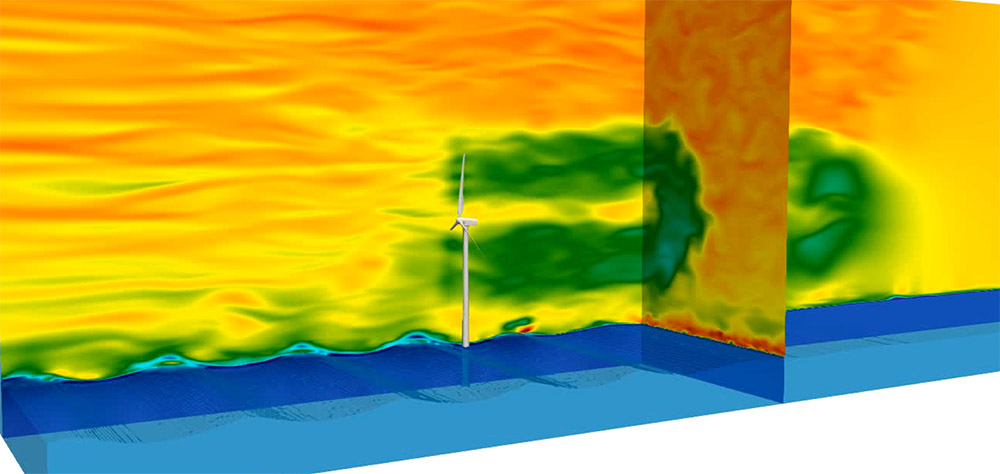LSU Civil Engineering Professor Aims to Create Offshore Energy Infrastructures That Resist Hurricanes, Aging
June 29, 2023
 BATON ROUGE, LA – Before hurricanes and storms wreak havoc on U.S. Southern coastal
cities, they first pass over oil and gas rigs in the Gulf of Mexico, testing their
structural integrity. While the rigs are built to withstand the elements, some storms
are just too strong for the aging platforms and pipelines, destroying the structures
and taking workers’ lives with them.
BATON ROUGE, LA – Before hurricanes and storms wreak havoc on U.S. Southern coastal
cities, they first pass over oil and gas rigs in the Gulf of Mexico, testing their
structural integrity. While the rigs are built to withstand the elements, some storms
are just too strong for the aging platforms and pipelines, destroying the structures
and taking workers’ lives with them.
Fortunately for the oil and gas industry, LSU Civil and Environmental Engineering Associate Professor Chao Sun is researching how to create resilient offshore energy infrastructure under extreme tropical cyclones and aging issues.
“Thanks to a $76,000 Early-Career Research Fellowship from the National Academy of Sciences, Engineering, and Medicine, my long-term research goals are to create safe, multi-hazard resilient offshore energy infrastructure, such as offshore wind farms, oil/gas pipelines, offshore platforms, and other civil infrastructure, such as buildings, bridges, and power transmission/distribution systems threatened by extreme windstorms and structural aging issues,” Sun said.
According to Sun, coastal cities along the Gulf of Mexico are facing more frequent severe tropical cyclones due to climate change, and as a result, critical civil infrastructure systems are frequently impacted by extreme winds, storm surge, and waves, rendering the infrastructure more vulnerable.
“The extreme winds and waves undermine the infrastructure system performance, damage the structural integrity, and cause a huge property loss, death/injuries, and environmental impacts,” he said.
In order to help coastal cities and oil rigs avoid devastation during hurricane season, engineers like Sun are developing data-driven, machine learning-enhanced monitoring methods for damage diagnosis of oil and gas pipelines to prevent leakage issues.
“When rebuilding, engineers are trying to use improved design schemes and strengthened structural components that are not necessarily more expensive,” Sun said. “Ninety percent of current U.S. offshore energy infrastructure is facing serious aging issues and need timely inspection. To achieve safe and multi-hazard resilient offshore/coastal energy infrastructure and communities, my research effort is specifically focused on four parts.”
First, Sun will develop high-fidelity computational models to simulate extreme wind and wave conditions for hurricane-proof design and safety management of offshore wind farms. Second, he will advance the fundamental understanding of combined wind-surge-wave flow characteristics and predict wind-surge-wave pressures on offshore energy infrastructure and buildings. Third, he will study protection and resilience-enhancement of critical infrastructure exposed to windstorm-induced, multi-hazard. Lastly, he will study smart-sensing and damage diagnosis of critical civil infrastructure to achieve safe operation and optimized management/maintenance.
In 2005, more than 3,000 of the nearly 4,000 oil platforms in the Gulf were in the direct paths of Hurricanes Katrina and Rita, which damaged 457 pipelines, destroyed more than 100 platforms, and caused about 540 oil spills in Louisiana waters. In 2017, Hurricane Harvey hit the coasts of Louisiana and Texas, resulting in catastrophic flooding and more than 100 deaths in Texas. The impact of Harvey forced 18 refineries in Texas to partially or completely shut down, leaving 20% of the U.S. oil supply compromised.
 In 2020, about 1,400 active oil wells were in Hurricane Laura’s path in the Gulf.
The damage was catastrophic, causing more than $23.3 billion in damage to the Lake
Charles area, 81 deaths, and miles of oil sheen in waterways. Other inland structures,
such as the BioLab petrochemical plant in Westlake, La., were greatly affected. The
BioLab plant experienced a chemical fire and toxic chlorine gas release.
In 2020, about 1,400 active oil wells were in Hurricane Laura’s path in the Gulf.
The damage was catastrophic, causing more than $23.3 billion in damage to the Lake
Charles area, 81 deaths, and miles of oil sheen in waterways. Other inland structures,
such as the BioLab petrochemical plant in Westlake, La., were greatly affected. The
BioLab plant experienced a chemical fire and toxic chlorine gas release.
Most recently, in 2021, Hurricane Ida caused more than $75.3 billion in damages ($18 billion in insured losses in Louisiana) and 107 deaths (30 in Louisiana).
Since Mother Nature and the demand for oil and gas are not slowing down anytime soon, Sun’s work is more important than ever. He hopes to yield solid results from his solo research project by the end of 2024.
Like us on Facebook (@lsuengineering) or follow us on Twitter and Instagram (@lsuengineering).
###
Contact: Libby Haydel
Communications Manager
225-578-4840
ehaydel1@lsu.edu